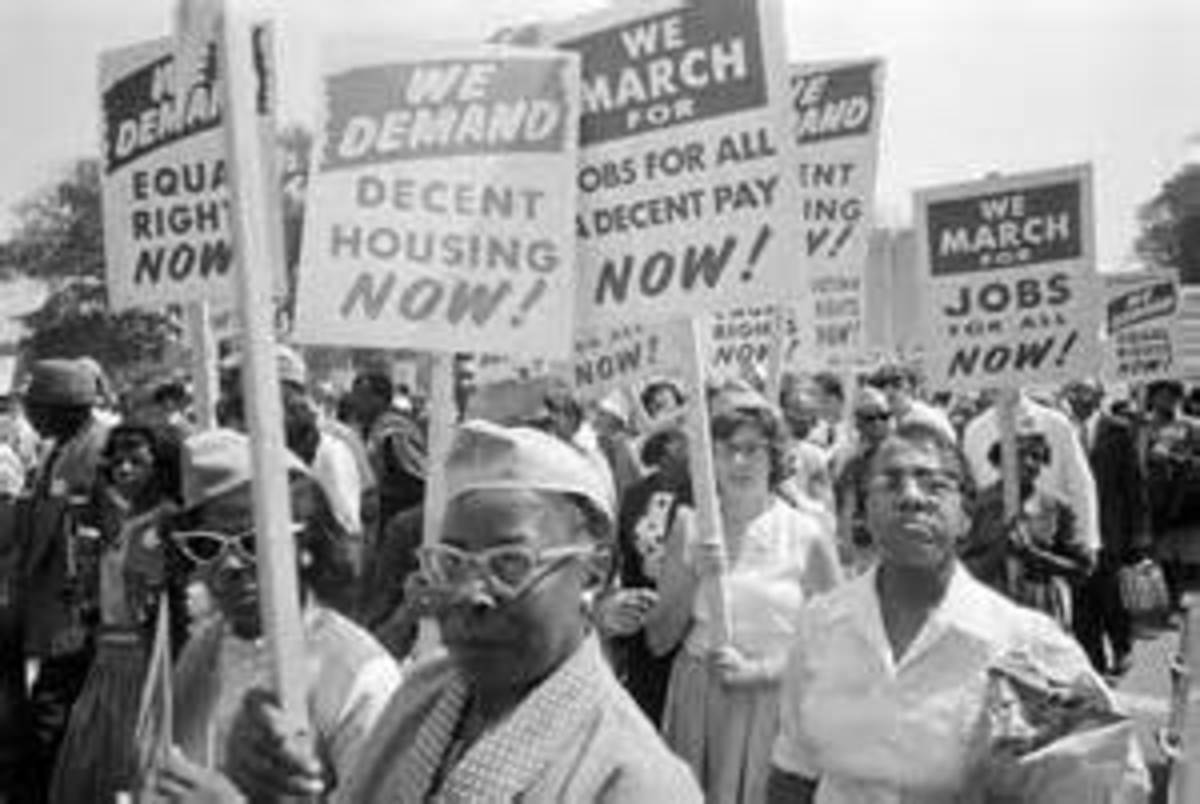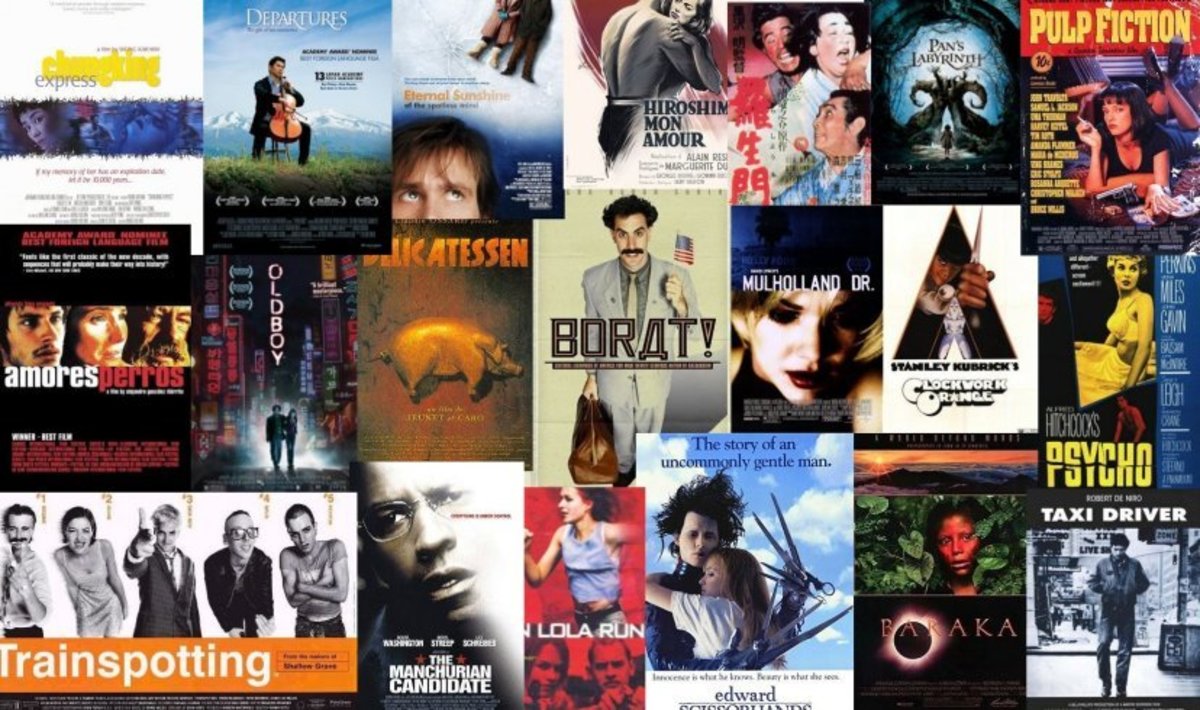Made in Dagenham - A Movie Review
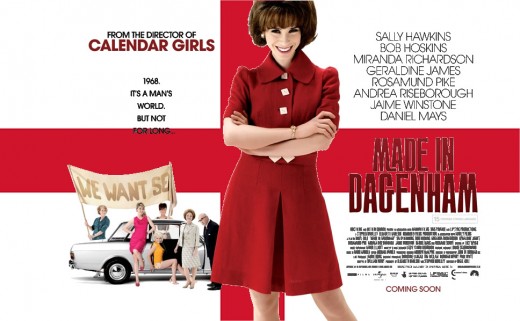
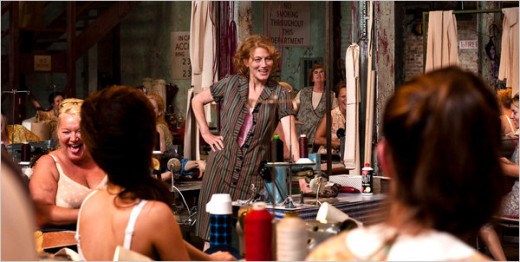


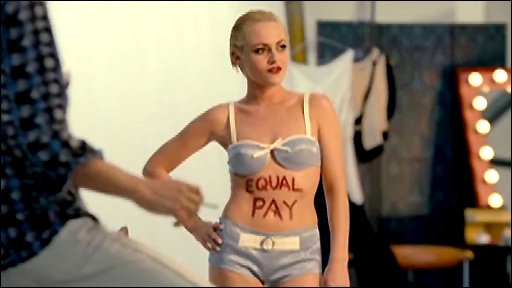
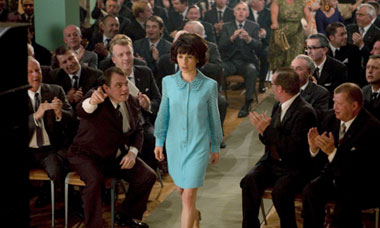
A little about the movie:
The movie Made in Dagenham focuses on Sexual Discrimination in employment where women were paid much less than men for equal work done. It is a movie about how a group of determined working class women come together to overcome influential and authoritative interests and fight for the payment wages on par with men. And no matter how we look at the movie – be it through a feminist, a political or a historical perspective, it is a remarkable movie with inspiring principles of equality.
The movie, directed by Nigel Cole, debuted at the 2010 Toronto International Film Festival with Sally Hawkins starring as Rita O’ Grady, the unlikely female protagonist who leads the strike for equal pay for both men and women. Some other notable characters are Albert Passingham, (played by Bob Hoskins), Lisa Hopkins (played by Rosamund Pike), Barbara Castle (played by Miranda Richardson) and Eddie O’ Grady (played by Daniel Mays).
Part I |The Story
“It is not the end. It is not even the beginning of the end. But it is, perhaps the end of the beginning.” – Winston Churchill as quoted by Albert.
Telling us the story of the heroic Rita O’ Grady, a fictitious character as the female protagonist who leads the Ford Sewing machinists’ strike at the Ford Dagenham plant in London, Made in Dagenham is a dramatized take on the real life event which had occurred in 1968 where several women workers had walked out in protest against sexual discrimination in wage payment demanding equal pay for both men and women. And as an indirect consequence, the Equal Pay Act of 1970 was passed by the British Parliament which ensured parity for both men and women in terms of pay and employment. Also, soon enough, the idea of equal pay for equal work became the Western standard since although it was repealed in 2010, there were substantive provisions from the former which were transcribed in the Equality Act, 2010.
Although the movie contains an unmistakably enormous message for us all, it is rather lighthearted and cheery, etched with humour. The movie opens up with scenes of several women of all ages riding on their bicycles going to work followed by what seems to be an advertisement commercial for Ford Motor Industry glorifying the company. It’s also interesting to note how women seemed to be slightly objectified during the entire commercial.
To begin with, a little introduction about Ford Motors: in 1968, there were about 55,000 men and 187 women employed at the Ford’s Dagenham factory in London. And these women had the daunting task of balancing their family life with their work life, trying to earn some extra money for their families. What they primarily had to do was stitch the interiors of a car in what would be a sweltering sweatshop basement which had such dreadful ventilation that they had to often strip down to their underwear, which unfortunately was not uncommon at that time. But since the entire sweatshop consisted of women, it wasn’t much of an issue.
It starts with their Union Rep, Albert telling them about how the complaint they had filed against Ford Motors for regarding them as ‘unskilled labourers’, had been admitted. So now, they have to vote on the threat that they’d made in the original communiqué – an immediate ban on overtime and a one day stoppage on the 29th of May. And the women are all in favour of Industrial action.
Rita, one of the workers and our main lead, in the beginning appears to be a docile and meek woman who can’t even speak up for herself when her son’s teacher quite blatantly humiliates her for the work she does and because of the background that she comes from. However, as the story proceeds, we realize that in actuality, she is the epitome of an emancipated woman with confidence, strength and integrity woven in with feminine charm and sensitivity. She is invited along with Albert to attend the workers’ negotiation meeting between the Ford’s officials and the Union. Initially she just nods her head to everything and anything told by the executives so as to not displease them, but when she sees that both the union brass and the company waive away the workers’ demands, she gives them a piece of her mind.
Finally, the strike’s been decided and they go on an all out nationwide strike for equal pay. Rita’s husband and the other male workers at the company initially support the women’s brave expedition. However, when the company shuts off the plant and lays them off, everything isn’t so merry anymore. Family problems start surfacing and Rita is faced with heavy criticism. And this is shown in one scene where Rita and her husband, Eddie get into a fight over her continuing with the strike. Eddie remarks about how he’s never lifted a finger against her or how he’s never gone out drinking with his buddies unlike his friends to which Rita gives an incredulous look and remarks, ‘You’re a saint. Is that what you’re telling me now, Eddie?’ When Eddie’s still lost and asks what she was talking about, she snaps at him and says, ‘That is as it should be!’ implying the fact that it’s about rights, not privileges.
In spite of all of this, the women stay adamant in their demands with their motto of ‘Equal Pay or nothing’ and the British Ford executives are forced to bring in an American executive skilled at union busting.
The strike kicks into action. However, it doesn’t go as planned as the officials don’t seem to care much about it, and in the end, they go back home disappointed in the soaking rain. The women, under the leadership of Rita, somehow manage to make it through against all odds, all the while gaining more support from the public.
In the process, Rita accidentally befriends another mom, Lisa Hopkins at her son’s school and incidentally, she happens to be the wife of one of the executives at Ford which she doesn’t find out until later on. They jointly sign a petition requesting the school authorities that the concerned teacher be fired. Lisa is portrayed as an understanding woman who sympathizes with Rita and supports her cause.
“I'm Lisa Burnett, I'm 31 years old and I have a first class honours degree from one of the finest universities in the world, and my husband treats me like I'm a fool.” – Lisa Hopkins
Part II | Analysis
Albert Passingham: The dispute’s got nothing to do with what skill level you are. Ford decided to give you less money because they can. They’re allowed to pay women a lower wage than men. All over the country, women are getting less because they’re women. You’ll always come second. You’ll always be fighting over the scraps from the top table, until you...
Rita O’ Grady: Until we get equal pay, yeah.
Since Ford has such a crucial role to play in the British Economy, the government is forced to get involved in the labour dispute. This is trail-blazed by Secretary of State, Barbara Castle, a domineering and gutsy woman, who calls herself a ‘fiery redhead’. She isn’t afraid to squelch anyone that comes in her way and she means what she says. She also shows her authority by berating two of the men that work in her office and hinting at supporting the women’s cause: “Credence? I will give credence to their cause. My god! Their cause already has credence. It is equal pay. Equal pay is common justice, and if you two weren’t such a pair of egotistical, chauvinistic, bigoted dunderheads, you would realise that.”
Since the women’s protest for Equal pay has finally been recognized by the government, Rita and three other co-workers manage to finally meet with Barbara Castle. She expresses her full support towards their battle and their cause for equal pay and reassures them that they’d have it. But only in time, because it wouldn’t be easy with the Lords kicking up a fuss and the press having a field day with it all. That doesn’t sit too well with Rita and she says, ‘What’s worth fighting for?’ to which the Secretary of State replies by saying, ‘Well, go return to work and go back to machines and you have my word, I will push forward with your fight.” This doesn’t please any of the women workers sitting there as we can gather from their expressions and Rita is forced to speak up saying that she would need solid evidence for that. And right then! She urges Barbara to think about it telling her that she has the authority and power in her hands. Barbara, however, tries telling Rita that it doesn’t work that way in politics and that sometimes they have to play the long game to which Rita simply replies by saying, ‘We aren’t politicians, we’re working women. And so are you.”
This puts Barbara Castle in a dilemma. Robert Tooley had earlier subtly warned her about how Ford Motors, one of the biggest employers of workers might be forced to pull out from England and take their factories elsewhere if the government supported the strikers. The consequences of that would be widespread unemployment. But she did what she believed was the right thing to do.
The movie ends with the four women walking out arm in arm with elated expressions on their faces and Barbara Castle joins them shortly and gives the crucial announcement to the reporters. The 184 Ford Motors’ women workers would be going back to work on the 1st of July and they’d be receiving an immediate pay-rise of about seven cents an hour. Added to that, she says that the government is in full support of the creation of an Equal Pay Act by the end of autumn that year and an appropriate legislation to ensure that the Act becomes a Law.
Two years later, in May 1970, the Equal Pay Act became law and similar legislation quickly followed in several industrial countries across the world.
Three very different women have been profiled throughout the movie – Rita O’ Grady, a normal woman working in a factory; Lisa Hopkins, a stay at home mom and Barbara Castle, a powerful politician. Although the first two women might appear to fit in to the stereotypes, they do not. In fact, all the three women challenge these stereotypes of women being known as yielding and resigned. They fight for what they truly believe in, showing immense courage and ideals.
Also, several other social notions such as a relationship between a man and a woman, the preconceived roles that they are expected to play and a set of rules set forth by society. The movie also shows us how much the men are really dependent on the women and how a family could fall to pieces without the presence of a maternal figure.
The character of Eddie O’ Grady, the husband of Rita stands out a little more. He’s a typical working man who’s just trying to be a good father to his children and a good husband to his wife. And although he loves his wife dearly and treats her extremely well, as we can see throughout the movie, he thinks of her as a mother to his children first and an independent woman that deserves respect second. However, he has to deal with the conflicting notions of what the society expects of the roles of men and women and the entire system of patriarchy.
Part III | Gender Disparity in our Society
“And then he said "Well, you've got to do something, haven't you? You had to do something, that was a given. Because it was a matter of principle. You had to stand up. You had to do what was right. Because otherwise you wouldn't be able to look at yourself in the mirror." When did that change, eh? When did we, in this country, decide to stop fighting? I don't think we ever did. But you've got to back us up. You've got to stand up with us. *We* are the working classes - the men *and* the women. We're not separated by sex, but only by those who are willing to accept injustice and those like our friend George, who are prepared to go into battle for what is right. And equal pay for women *is* right.” – Rita O’ Grady in her impromptu speech talks about her friend’s husband George.
Gender disparity and unequal pay have been major global concerns for about a century now. And although times have changed since the time when there were no laws to safeguard the rights of women and minorities and when paying women lesser than men was taken for granted, reports show that sexual discrimination at workplace is still a fairly common phenomenon. There still remain several women who are consistently being underpaid and under-promoted. According to the Times of India, there isn’t a single country in the world where women are paid the same as men for equal work done; not even in the Nordic countries which boast of a high overall gender parity.
Even in developed countries such as the US, women workers earn a lot less than men even decades after the passage of the Equal Pay Act. And among all the states in the country, the state of Wyoming has the largest gender gap with women earning only 67 cents for every dollar earned by a man (far below the 77-cent average) in 2011.[1]
And coming to the case of India, the Global Gender Gap Report of 2010 revealed that the country has been distinctly ranked as the lowest in gender parity, including pay parity among the BRIC nations (Brazil, Russia, India and China). [2]
According to a survey done by the World Economic Forum in 2010[3], the gender gap is not restricted to lower level workers alone. It is widely prevalent in the corporate sector too. In Corporate India, the average annual income of a woman is one-third that of a man ($1185 to $3698). Also, the number of women employees holding the senior management positions was only 10% in most of the surveyed companies.
In India, gender wage parity is yet to be achieved fully even though legislation is available. Social factors such as Customs and practices which give women inferior legal status, socio-cultural attitudes, beliefs and practices that limit women’s mobility, social contact, access to resources and types of activities they can pursue play a huge role in underlying and supporting gender based disparities.
Whether it is due to diffidence, social norms, employment policies, archaic practices or any other reasons, women are more educated than ever and it is only up to them to speak up and demand a better pay. Equal pay and opportunity for equal work is a given and should be the only basis of fairness.[4]
BIBLIOGRAPHY
List of Websites and books used:
- www.timesofindia.com
- www.money.cnn.com
- www.bbc.co.uk
- Toolkit on Gender in Water and Sanitation; Gender Toolkit Series No. 2 – Monica S. Fong, Wendy Wakeman and Anjana Bhushan.
CITATIONS
[1] Tami Luhby, CNNMoney, Women: Beware the Wyoming wage gap, June 11, 2013.
Can be found at: http://money.cnn.com/2013/06/11/news/economy/income-gap/index.html
[2] Rema Nagrajan, The Times of India, Unequal pay for equal work dogs working women in India : Study, March 9, 2011.Can be found at: http://articles.timesofindia.indiatimes.com/2011-03-09/india/28671960_1_gender-parity-equal-remuneration-act-wage-discrimination
[3] The Global Gender Gap Report, 2010 – Ricardo Hausman (Harvard University), Laura D. Tyson (University of California, Berkely), Saadia Zahidi (World Economic Forum).
[4] Toolkit on Gender in Water and Sanitation, Gender Toolkit Series No. 2, Monica S. Fong, Wendy Wakeman and Anjana Bhushan, Gender Issues in the Water and Sanitation Sector, Chapter 2, Pg 2.


